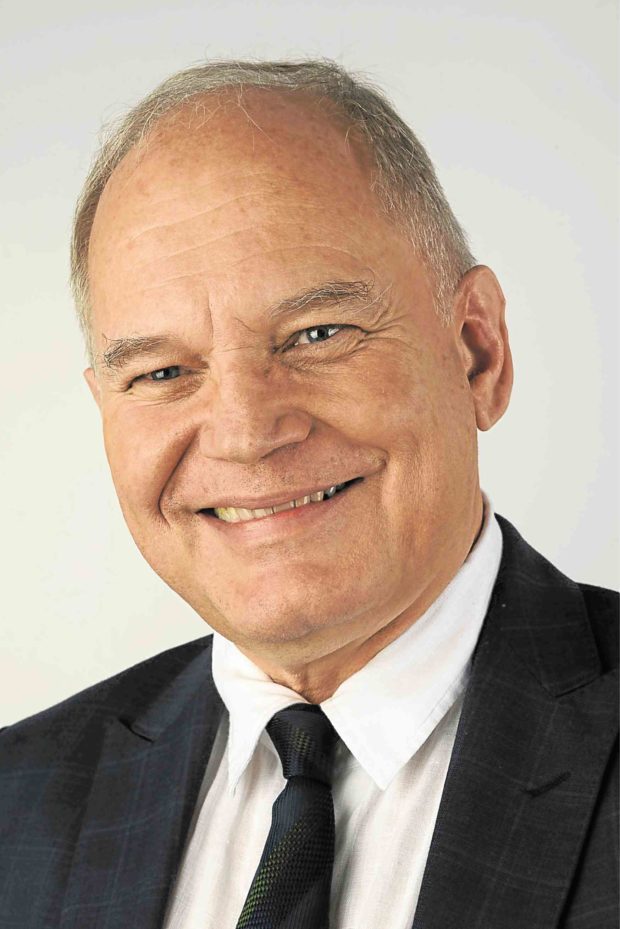The opportunities are obvious.
With bright economic prospects and an expanding population—mostly young and well-educated and English-literate consumers—spread across more than 7,000 islands, the Philippines presents a growing need for an efficient goods and service delivery and transport system.
Increasing demand for fresh foods and quality products resulting from greater spending power brought about by the robust BPO industry and cash remittances from overseas is also opening up opportunities for logistics and distribution.
The country’s freight and logistics market is forecast by global market research firm Transparency Market Research to reach P3.26 trillion by 2023. True enough, we are already seeing the growing demand for warehouses and storage facilities, in particular for food, beverage, clothing apparel and packaging materials.
The significant backlog in infrastructure, however, keeps businesses from ensuring products efficiently reach consumers.
The government’s “Build, Build, Build Program” reflects solid efforts to improve infrastructure and even help generate employment, attract investments and promote sustainable inclusive growth.
But this program alone will not solve all problems, and everyone from government and the private sector needs to be involved.
The port congestion in 2014, a result of delivery restrictions to and from the ports, led to even more severe traffic and taught us some lessons.
The need to actively get feeder connections to Batangas and Subic was one of these lessons, such that eight shipping lines now serve Subic and four shipping lines serve Batangas.
However, berth capacity in Manila seems to be at a brink again with Batangas neither expanding fast enough.
Coupled with a severe shortage of off-dock container yard space, we are entering once again a period of low productivity in deliveries, which results in shortage of trucks and high transport costs.
Subic as a real free port is still an untapped opportunity. Subic can be a less costly alternative for the distribution of goods in the north.
What challenges and opportunities are there in the different logistics segments in the country?
Cold chain— The growing population creates a need for additional cold storage facilities all over the country.
This means opportunities for integrated cold chain systems offering seamless logistics solutions, which would then mean upgrading not just the equipment but the IT systems and antiquated POD and manual DR systems as well. Consignees would also need to update their systems to ensure alignment in systems and processes and avoid unnecessary spoilage and truck congestion.
Packaging and distribution —High spoilage risks in moving perishable cargo from the farm to the market reflect the importance of modern packaging and transport systems and equipment. Investing in state-of-the-art packaging facilities in major producing areas such as Baguio, Tagaytay and Mindanao is, thus, crucial.
We need an effective agri-food supply and value chain, in which logistics plays a deciding role. The distribution centers should be generally located outside urban centers and, together with cold storages, should comply with international and local standards. This means stricter enforcement of food safety regulations.
In terms of distribution and delivery, the opportunity is in inventing new ways of delivering the goods. These could include using motorcycles in high-traffic areas for carton-sized deliveries to newer, bigger vessels for better economies of scale in domestic shipping.
Domestic shipping —The future hinges on better port facilities, bigger and newer vessels and more reliable, on-time deliveries. Domestic shipping is both a big opportunity and challenge, with bureaucracy and high taxes hindering local ship owners from creating enough capital base to compete better.
Connecting Mindanao to Luzon with competitive freight rates to ensure high-quality, on-time service would give the industry a boost. Improving port facilities in Cebu, Cagayan de Oro, Davao, Iloilo, Bacolod and Zamboanga can help in ensuring depth for bigger, more economical vessels while installing ship-to-shore cranes to service ports with ungeared container ships will push down freight rates.
The industry needs greater competition instead of market consolidation to make rates more competitive.
Incentives for bigger but less-polluting LNG-powered vessels might encourage investment in such vessels.
Removing red tape in government and lowering taxes would also help companies boost their competitiveness both in the domestic and international platforms.
International shipping —In Asean, we may see some intraregion cabotage easement, which can create opportunities and competitive challenges at the same time. We see promoting Subic and Batangas as not only relieving traffic in Manila but creating more opportunities for shipping companies.
We have one of the highest port charges in Asia, in fact even higher than Singapore’s. There should be a clear separation between an operator and the regulator government agency.
Airfreight handling —Seventy percent of domestic airfreight is carried in the belly of passenger aircraft. Investing in freight-version aircraft will mean more uplift capacity, greater competition and lower freight charges.
Instead of franchising air cargo handling to a restricted few, opening the operation to competition would help lower tariffs. The government may also want to review the reasons why Naia 3 has no air cargo facility despite a concluded bidding.
Realizing the huge growth potential in all these areas, Royal Cargo, leading end-to-end logistics solutions provider, remains an active player in both local and international logistics, and is keen to expand its business further by leveraging its knowledge of the market and what can be done to address challenges.
The Philippines has a lot of potential.
With concrete actions done to improve the different areas of the logistics industry and address their respective needs, the country can definitely become a major logistics hub by 2023, or even earlier than that. —CONTRIBUTED


